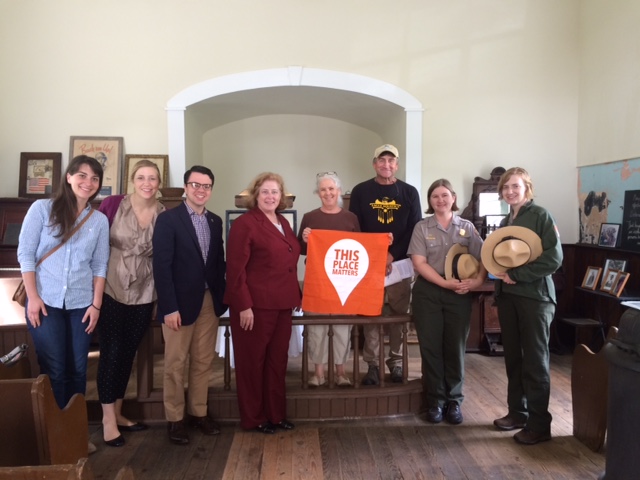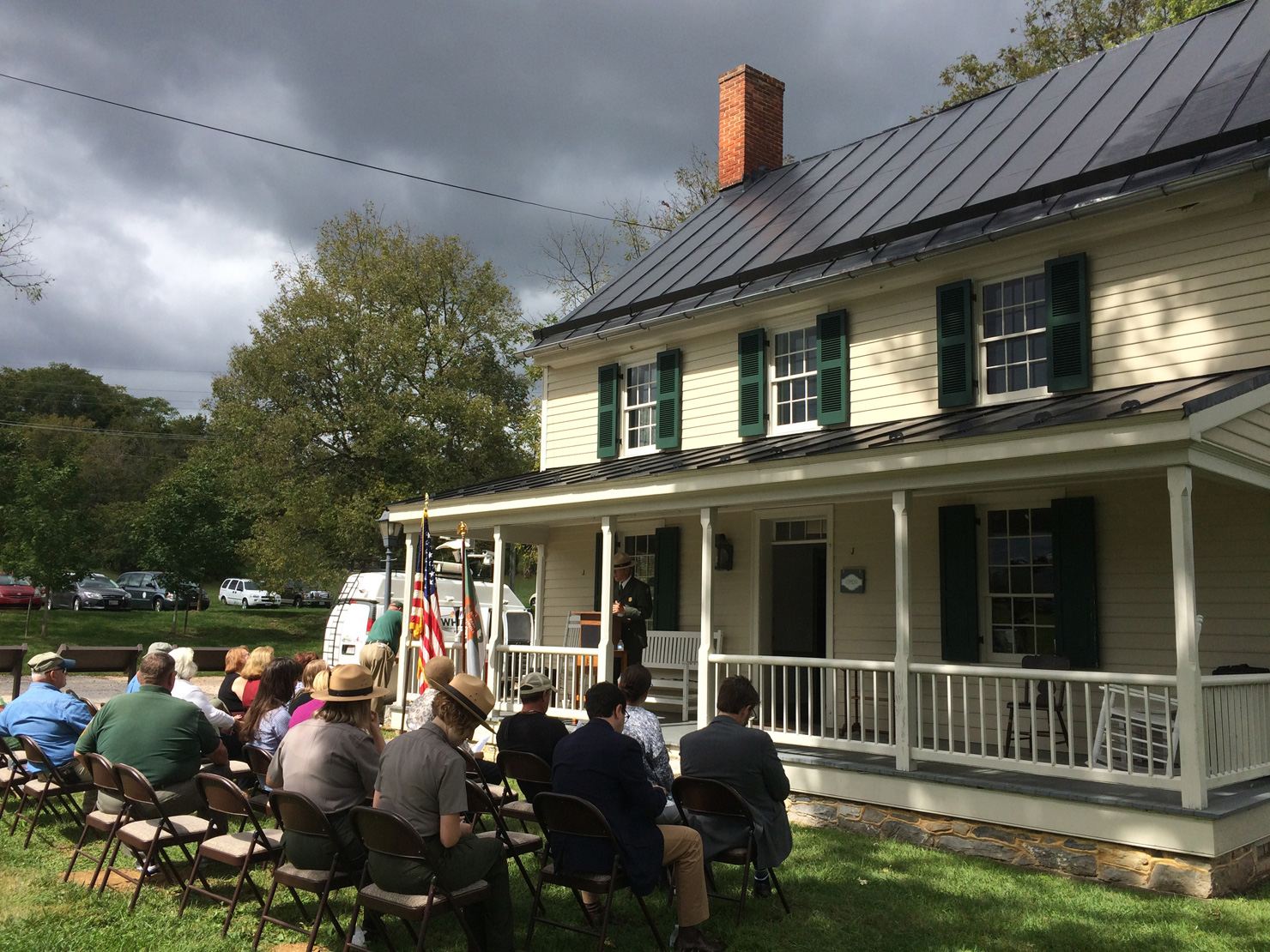In the Heart of the Civil War Heritage Area—one of Maryland’s thirteen certified Heritage Areas covering portions of Carroll, Frederick, and Washington Counties—we’re using 21st century technology to help visitors and residents discover our Civil War heritage.
Over the past year, we’ve partnered with museums, parks, and community organizations to host a series of social media meetups. These meetups are designed to connect new and diverse audiences—both in person and online—with historic resources in the Heritage Area. Our social media followers got a behind-the-scenes look at the National Museum of Civil War Medicine in Frederick in March and a special #CivilWarSocial tour at the National Shrine of Saint Elizabeth Ann Seton in Emmitsburg last November. The most recent gathering took place in late September, examining the role of emancipation in one Maryland community.

Preservationists in the Civil War Heritage Area
The #EmancipationInSharpsburg meetup began with a presentation at the historic Newcomer House located at Antietam National Battlefield. The Newcomer House served as the centerpiece of a bustling mill complex during the 19th century and has been open to the public as the Exhibit and Visitor Center for the Heart of the Civil War since 2010. Keith Snyder, Chief of Resource Education & Visitor Services at Antietam, discussed the Preliminary Emancipation Proclamation that President Abraham Lincoln issued on September 22, 1862. He explained that the unimaginable bloodshed that took place at Antietam on September 17, 1862, became a major turning point in Civil War—and American history. The Union’s victory in battle spurred Lincoln to issue this very controversial abolition of slavery. Starting on January 1, 1863, slaves in areas then “in rebellion against the United States shall be then, thenceforward, and forever free.”
Because it has been preserved as a battlefield park for the past 125 years, visitors to Antietam that day were able to stand on the landscape which forever changed the meaning of freedom. And, in the age of smartphones and social media, these visitors were able to share their photos and insights from Ranger Snyder, in real time, with their social networks. Social media provided a new group of digital visitors the opportunity to participate in this commemoration of the 153rd anniversary of the Preliminary Emancipation Proclamation—reaching the many Civil War buffs, preservation enthusiasts, historians, genealogists, students, teachers, and everyday citizens who could not visit the battlefield during a midweek workday.

After Ranger Snyder’s presentation, a group of participants from Preservation Maryland, the Maryland State Archives, the Maryland Office of Tourism, Monocacy National Battlefield, and C&O Canal National Historical Park drove a mile into town to explore another element of the emancipation story. Edie Wallace, President of the all-volunteer Friends of Tolson’s Chapel, opened the doors to this striking one-room chapel built on High Street in 1866. She reminded the group that freedom did not reach enslaved Marylanders until November 1, 1864, when a new state constitution went into effect. In the years following the Civil War, the newly formed Freedmen’s Bureau established schools across the country. Tolson’s Chapel served Sharpsburg’s African American community as the American Union School, where a dozen students were only four years removed from slavery when they entered the classroom in 1868. Meetup participants could see the liquid slate used by the students still painted on the chapel walls—and shared photos of this tangible connection to the Reconstruction era with their social media followers.

Preservationists in the Civil War Heritage Area
The Friends of Tolson’s Chapel have worked tirelessly to restore the historic structure to its late 19th century appearance. Today, the building is one of only five extant, documented Freedmen’s Bureau schools in the country. Leveraging state grants—including the African-American Heritage Preservation Program, which Preservation Maryland vocally supported—with nonprofit funding (such as Preservation Maryland’s Heritage Fund) as well as private donations, the volunteers at Tolson’s Chapel have preserved this important yet often overlooked period of our nation’s history for generations to come. And by opening the doors to this social media meetup, the Friends of Tolson’s Chapel have invited a new generation of preservationists to become engaged with this unique historic site.
Auni Gelles has worked as the Heart of the Civil War Heritage Area Assistant since August 2014. Prior to becoming involved with Maryland’s Heritage Areas program, she spent time in the New Media department at the National Museum of American History and working on history and literature programs at the Maryland Humanities Council. A Baltimore City resident, she enjoys traveling to historic sites across Maryland both on the job and off. She is currently pursuing a Master’s of Historical Studies (public history concentration) at the University of Maryland, Baltimore County.

